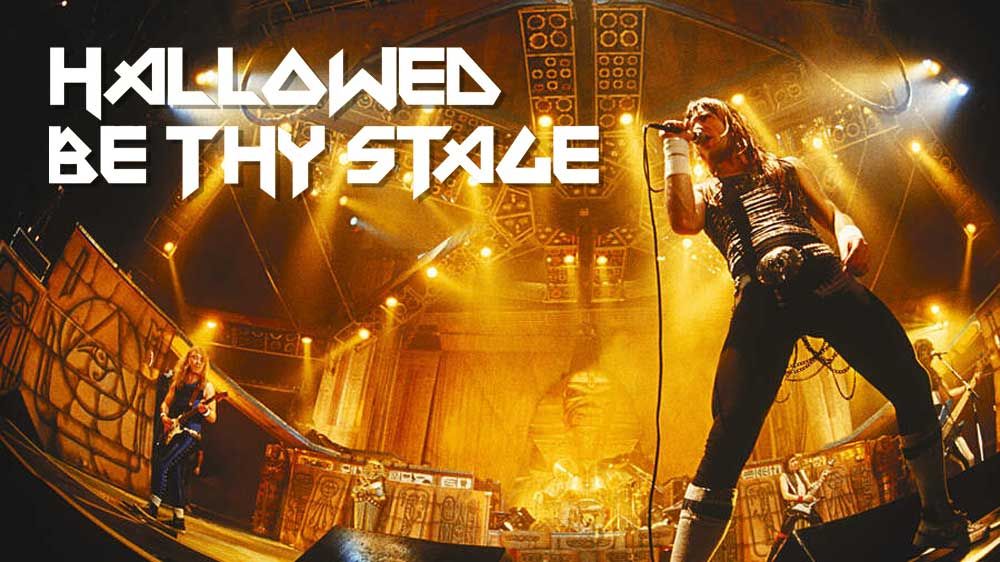As the venerable manager of Iron Maiden for an astonishing 45 years, Rod Smallwood possesses an unparalleled perspective on the band’s legendary live performances. With hundreds of shows witnessed firsthand, Smallwood reveals that not all landmark concerts are defined by perfection, but rather by their profound importance and the invaluable lessons they imparted, shaping the trajectory of one of heavy metal’s most enduring acts.
Smallwood’s journey with Maiden began with an unforgettable incident in a London pub in 1979. This inaugural encounter, predating his official management role, saw bassist Steve Harris step up to vocal duties after lead singer Paul Di’Anno was unexpectedly detained by authorities for carrying a flickknife. This chaotic yet captivating performance, which showcased the band’s raw resilience, left a lasting impression on Smallwood and laid the groundwork for his future commitment.
Driven by a vision for global success, Iron Maiden strategically prioritized international market development, notably touring Japan before making significant inroads in America. The early sold-out show in Seattle, attracting 13,000 fervent fans, underscored the band’s burgeoning worldwide appeal. This concert, coming only six shows into their initial U.S. tour, validated Smallwood’s belief in the universal power of heavy metal and solidified their commitment to parallel growth across continents.
A pivotal moment arrived during their pioneering tour behind the Iron Curtain in the early 1980s, specifically in Poland, then under Soviet control. The profound reaction from an audience largely deprived of Western live music was nothing short of magical. Witnessing fans experience a full-scale arena rock show for the first time deeply resonated with the band and management, revealing the immense emotional impact their music could have beyond conventional markets.
The legendary incident in Poland involving Bruce Dickinson’s onstage injury proved to be a defining moment. Frustrated by poor sound, Dickinson inadvertently cut his head on a guitar head, resulting in dramatic bleeding. Smallwood, recognizing the raw theatricality, encouraged Dickinson to showcase the wound for the cameras. This visceral image significantly amplified their presence in South America, immediately escalating their audience numbers to over 40,000 per night, demonstrating the unforeseen power of raw, unscripted moments in live performance.
The period with Blaze Bayley as vocalist saw a deliberate strategy to debut new material away from intense media scrutiny. Initial shows in Jerusalem and South Africa, chosen for their distance from mainstream critics, provided a crucial proving ground. Though different from previous iterations, these intimate performances in unique settings confirmed the band’s unwavering spirit and commitment to continuing, dispelling any notions of disbandment following Bruce Dickinson’s departure.
The highly anticipated return of Bruce Dickinson and guitarist Adrian Smith marked another significant chapter. After a series of smaller, preparatory shows in America, the sold-out Paris concert, drawing 15,000 fans, served as a true milestone for the reunited lineup. This performance reaffirmed their enduring popularity and demonstrated the powerful resurgence of the classic Maiden formation, setting the stage for renewed global dominance.
The festival performance near the desert in Dubai stood out as a profound moment of cultural unity. With Metallica as special guests, the event attracted a diverse audience from across the Middle East, symbolizing how music could transcend geographical and cultural divides. The sight of fans wearing hijabs alongside Iron Maiden T-shirts underscored the universal appeal of their music and fostered an extraordinary sense of positivity and shared experience.
Iron Maiden’s unwavering dedication to delivering their full, elaborate stage show to every corner of the globe is a testament to their commitment to fans, regardless of location. This principle, albeit cost-prohibitive at times, underscores Smallwood’s long-held ambition for the band’s international reach. Playing to 25,000 people in the heart of the Amazon rainforest serves as a powerful, almost poetic, culmination of this vision, cementing their legacy as a truly global phenomenon.






Leave a Reply